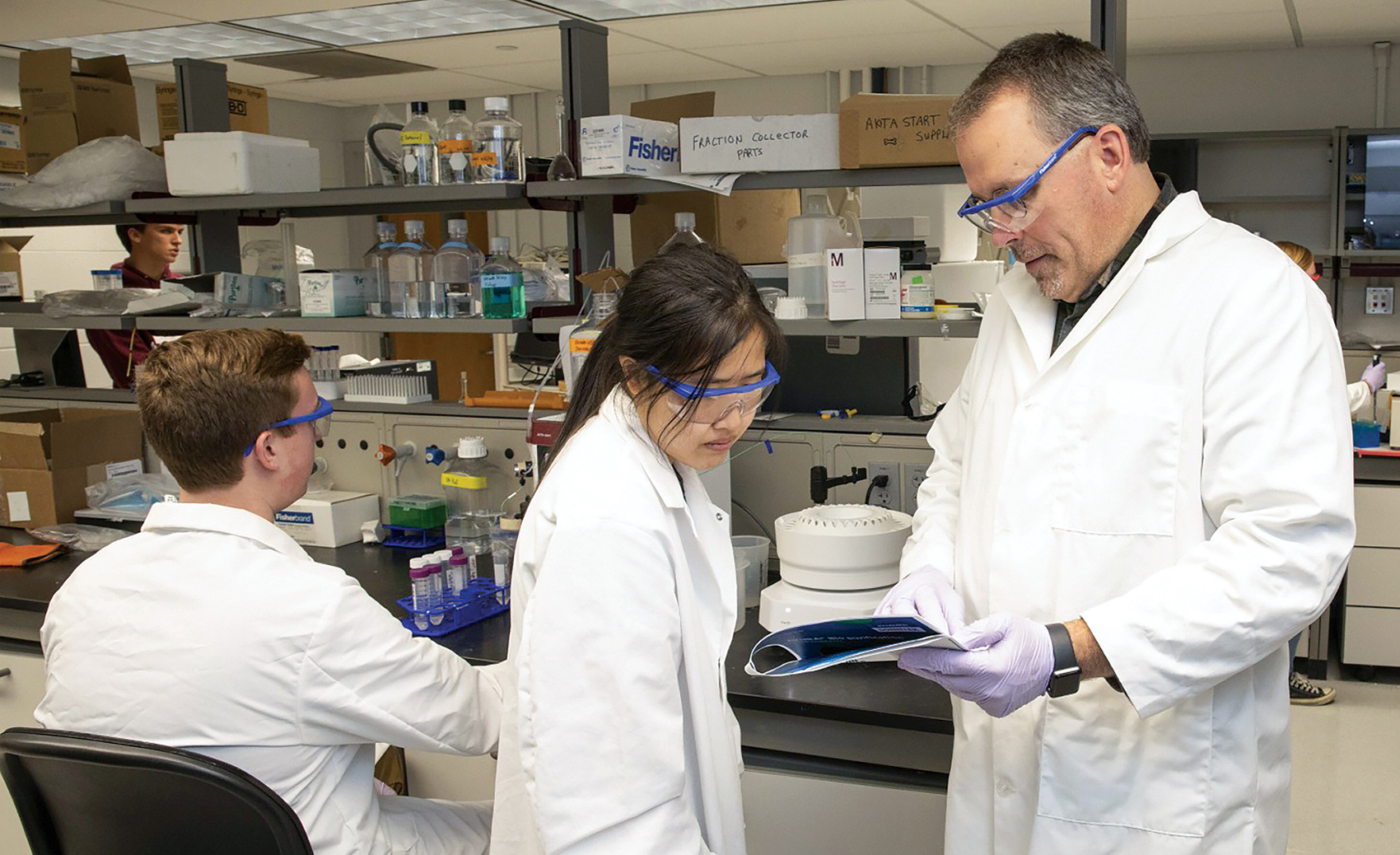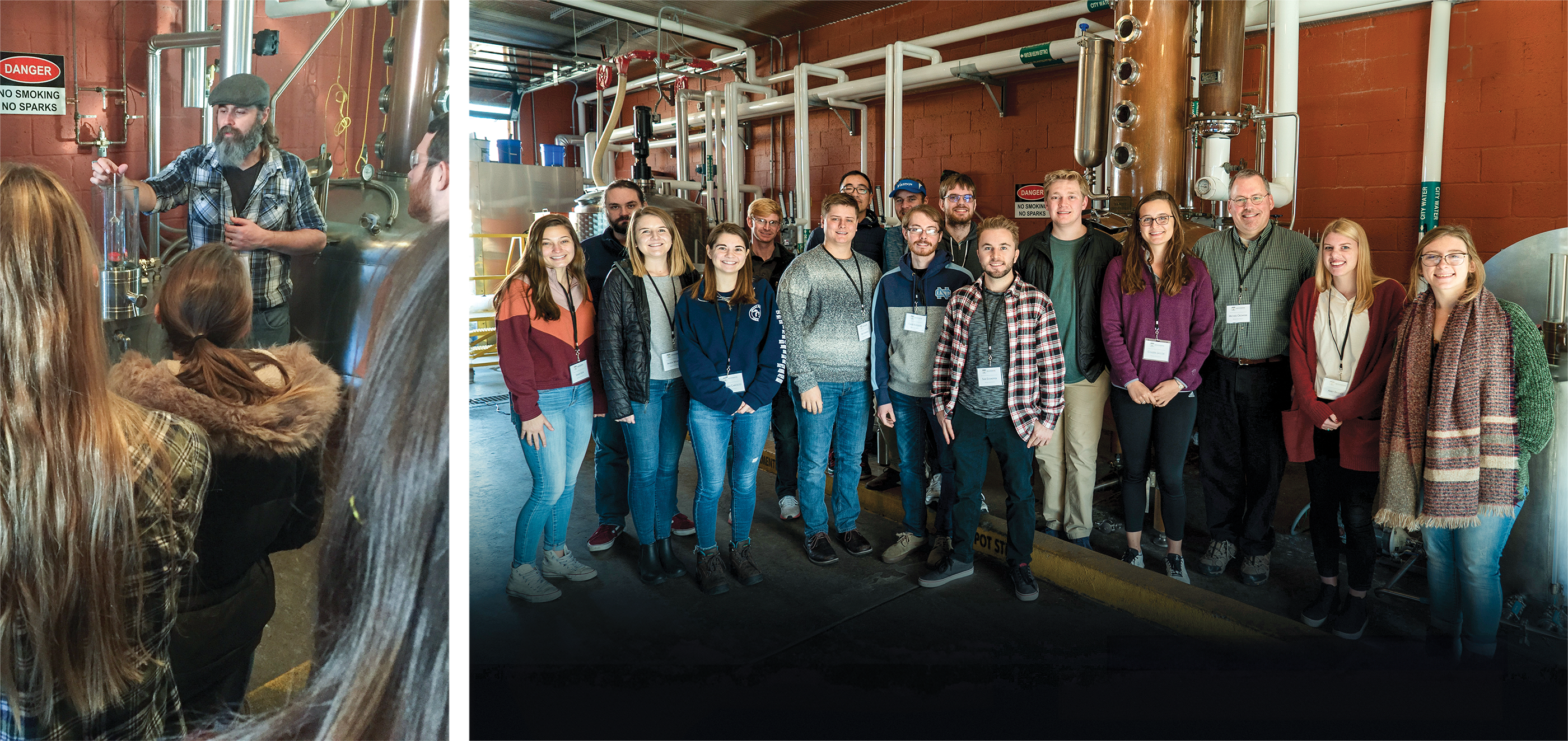The bourbon industry is booming. Since 1999, production of the spirit has increased by 475%, creating an industry worth over $9 billion, according to a 2022 report by the Kentucky Distillers’ Association. Despite its popularity, not much is known about the chemistry behind bourbon’s complex and rich flavor. Michael Crowder ’88 is working to fill this gap and unravel the chemical mysteries of America’s spirit.
Strictly made in the U.S., bourbon is produced from a mash of different grains, which must be at least 51% corn, a requirement that gives the spirit a distinctive sweetness.
Crowder began researching bourbon in 2015, but his connection with whiskey goes back much further. It all started in South Hill, Virginia. Growing up in a close-knit family, he remembers holiday reunions marked by good food, spirited conversation and, of course, bourbon for the adults.
“It was a rite of passage for the boys in my family to be invited into the front room where all of the men were drinking bourbon and talking about subjects that should never be discussed during family reunions — religion and politics,” he says.
At William & Mary, Crowder obtained the second ingredient he would need for his future research — a solid grounding in chemistry. He attended the university with his twin brother, Robert Crowder ’88. Both were drawn to W&M by its beauty, academic reputation and community.
“W&M was the perfect place for my brother and me,” Michael says. “It had the academic rigor we were looking for while also being small enough so that we knew many of the people in our classes.”
Robert pursued an accounting degree, while Michael ventured into the chemistry lab. With a fascination for science and an aptitude for experimentation, Crowder soon found himself conducting research with David Thompson, then chair of the chemistry department and currently an adjunct professor. It was Thompson who encouraged Crowder to consider getting his doctorate in chemistry, which he received from the University of Virginia several years later.
Following postdoctoral work at Penn State, Crowder headed to Miami University in Oxford, Ohio, to conduct research and teach. He established a robust lab to study ways to treat antibiotic-resistant bacterial infections with the help of undergraduate and graduate students. As a professor, he finally began his foray into the field of bourbon research, which was catalyzed by a trip to Moonshine University.
Yes, such a place exists. And according to Crowder, “It’s awesome.”
Located in the heart of bourbon country — Louisville, Kentucky — Moonshine University is a bona fide distilling school that provides classes and workshops covering every aspect of the spirit-making process. Crowder’s first visit was in 2015, as the chaperone for a group of his students who had been given a free, weeklong distillation course by Moonshine University founder and Miami University alumnus David Dafoe.

